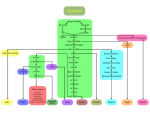 If you are in an Ismaili(Muslim)-Hindu love relationship, this information may help. If you wish to add a correction or add other information, comment below.
If you are in an Ismaili(Muslim)-Hindu love relationship, this information may help. If you wish to add a correction or add other information, comment below.
There is no need for religious conversion (shahadah) of a Hindu for nikaah (Islamic wedding; contract) in the Ismaili faith. Ismaili-Hindu couple can have an Ismaili or a Hindu wedding, but two weddings are not permissible. The couple should pick one of two ceremonies and go for it. This is because having a Hindu wedding undermines the nikaah, and vice a versa. If the couple had a Hindu wedding, they can come to a local jamatkhana (mosque) for blessing. If the couple had a civil wedding, then it should follow with nikaah within a month.
The non-Ismaili spouse has to give a written consent to raise children Ismaili and teach them only Ismaili faith. This consent (pre-nuptial agreement) has to be notarised. Even after having Ismaili nikaah, the couple has an option to raise children in Hindu faith, but children cannot not be raised in two faiths. This point has to be discussed up front in an Ismaili-Hindu relationship, agreed on it and follow through the married life. Additional information is available in a booklet–Marital Harmony Booklet–that is available at a local jamatkhana.
The Ismaili child will have an initiation ceremony at 3 month of age. Circumcision can be done at any age. Note non-Islamilis are not allowed in jamatkhana and thus the Hindu parent/grand parents will be kept out of any Ismaili religious rituals on their children/grandchildren.
In case of a divorce, the couple will follow the laws of the land.

About Ismaili faith:
Isma’ilism is a branch of Shia Islam. The Ismaili get their name from their acceptance of Imam Ismaʻil ibn Jafar as the appointed spiritual successor (imām) to Ja’far al-Sadiq, wherein they differ from the Twelvers who accept Musa al-Kadhim, younger brother of Ismaʻil, as the true Imām. See figure below for other details. Ismailis are united by their belief in a living hereditary Imam of the Time from the progeny of Prophet Muhammad (may peace be upon him and his family).
Ismailism rose at one point to become the largest branch of Shīʻism, climaxing as a political power with the Fatimid Caliphate in the tenth through twelfth centuries. Ismailis believe in the oneness of God, as well as the closing of divine revelation with Muhammad, whom they see as “the final Prophet and Messenger of God to all humanity”. The Ismāʿīlī (Seveners) and the Twelvers both accept the same initial Imams.
After the death of Muhammad ibn Ismaʻil in the 8th century CE, the teachings of Ismailism further transformed into the belief system as it is known today, with an explicit concentration on the deeper, esoteric meaning (batin; the Quran, for instance, has a hidden meaning in contrast to its exterior or apparent meaning, the zahir) of the Islamic religion. With the eventual development of Twelverism into the more literalistic (zahir) oriented Akhbari and later Usuli schools of thought, Shiʻi Islam developed into two separate directions: the metaphorical Ismaili group focusing on the mystical path and nature of God, with the “Imām of the Time” representing the manifestation of esoteric truth and intelligible reality, with the more literalistic Twelver group focusing on divine law (sharia) and the deeds and sayings (sunnah) of Muhammad and the Twelve Imams who were guides and a light to God.
Though there are several paths (tariqat) within Ismailism, the term in today’s vernacular generally refers to the Nizaris, who recognize Aga Khan IV as the 49th hereditary Imam and are the largest Ismaili group. In recent centuries Ismāʿīlīs have largely been a Pakistani and Indian community.
The zakat (similar to membership dues in churches) rates historically differed depending on the asset type: 2.5% of animals, 5% of minerals, and 10% of crops. Among Khoja Ismailis, the zakat is 12.5% of cash income and among other Ismailis of Iran, Syria, Central Asia, and China, the zakat is 10% of cash income.
Many Ismaili sects do not ascribe to mainstream Islamic beliefs regarding the Hajj, considering it instead to metaphorically mean visiting the Imam himself, that being the greatest and most spiritual of all pilgrimages. Since the Druze do not follow shariah, they do not believe in a literal pilgrimage to the Kaaba in Mecca as other Muslims do, while the Mustaali (Bohras) as well as the Nizaris still hold on to the literal meaning as well, performing hajj to the Ka’aba.
The Khojas (Gujarati: ખોજા) are a Nizari-Isma’ili Shia community of people originating in India. The word Khoja derives from Khwāja (New Persian Khājé), a Persian honorific title of pious individuals used in Turco-Persian influenced areas of the Muslim world. In India, most Khojas live in the states of Gujarat, Maharashtra, Rajasthan and the city of Hyderabad.

Sources and other information:
https://the.ismaili (if you have questions, ask them at https://the.ismaili/contact-us)
http://ismaili.net
https://en.wikipedia.org/wiki/Isma%27ilism
Why do the Ismaili pray 3 times a day instead of 5?
This post is a part of new initiative to learn of how different faiths handle people from other faith when there is an interfaith marriage. Here, “Hindu” is picked as an example common faith because its belief system is different than many others. More such comparisons will be posted on this site.
Other readings: Hindu-Muslim Marriage, Sharia, Muslim-Hindu marriages, Hindu-Muslim lovers’ experiences, Koran on Hindus? Hindu girl-Muslim boy, Marriage & Divorce laws.
Return to Home, Blogs, How to Share? Facebook, Youtube, Twitter, Book, Media.
